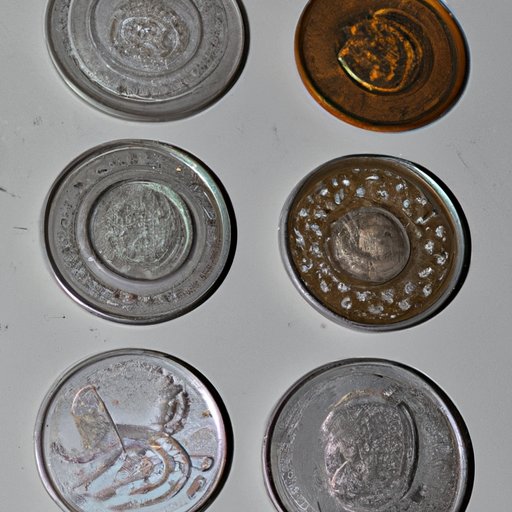Introduction
Coins are a form of currency that has been used for centuries. They have played an integral role in commerce and have had a major influence on politics, culture, and society throughout history. But who invented coins? This article will explore the history and evolution of coinage and its impact on the world.
Definition of Coins
Before diving into the history and significance of coins, it’s important to define what coins are. According to the Oxford English Dictionary, coins are “a small, flat, and usually round piece of metal issued by a government as money.” This definition applies to coins of all kinds, from the earliest coins invented to modern-day coins.
Overview of the Problem
The invention of coins is something that has long been debated by historians. While there is no definitive answer, there is evidence to suggest that coins were first used as early as 600 BC. Since then, coins have gone through numerous changes and evolutions and have had a profound impact on society. In this article, we’ll explore the history and evolution of coins and the impact they’ve had on the world.
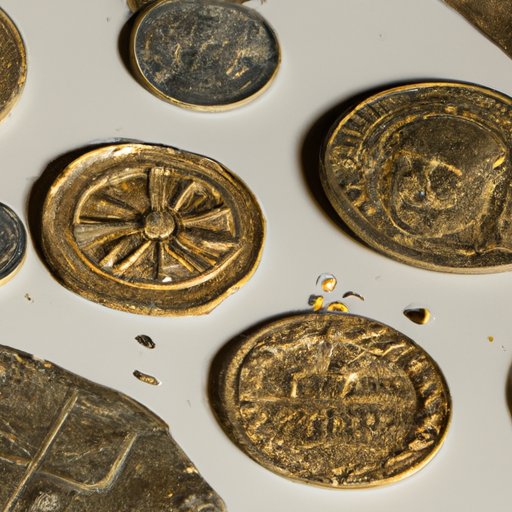
Historical Overview of the Invention of Coins
The first recorded use of coins dates back to around 600 BC in the Kingdom of Lydia, which was located in present-day Turkey. The coins created during this time were made of electrum, a naturally occurring alloy of gold and silver. These coins were stamped with marks that indicated their value and were used for trading.
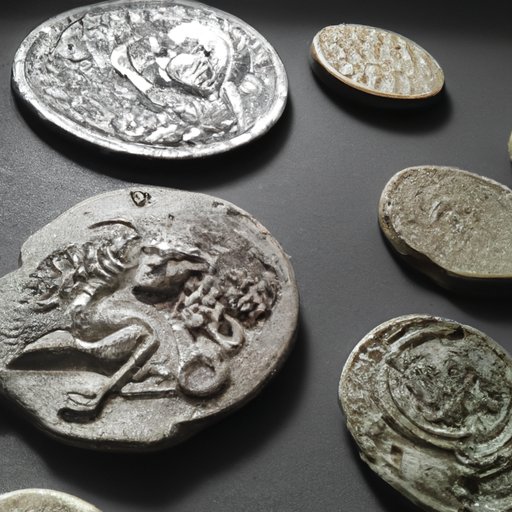
Ancient Civilizations and Their Coins
As coins spread throughout the ancient world, different civilizations began to create their own coins. Ancient Greece and Rome both had their own coins that featured gods and goddesses on them. In China, coins were made out of bronze and had square holes in the center. These coins were strung together and used as currency.
Origins of Modern-Day Coins
Modern-day coins trace their roots back to the Middle Ages when coins began to be made out of gold and silver. During this time, coins were widely circulated and used for trading and commerce. As technology advanced, coins became more sophisticated and began to feature images of rulers and other important figures.
Exploring the Artistry Behind Ancient Coins
The artistry behind ancient coins is something that has fascinated historians for centuries. Ancient coins were often intricately decorated with symbols, images, and writing. The symbols and images used on coins often had deep symbolic meaning and served as a way for rulers to communicate messages to their people.
Design Elements of Ancient Coins
Ancient coins often featured the image of a ruler or god on one side and an emblem or symbol on the other. These designs were often quite intricate and could include images of animals, plants, and other symbols. Some coins even featured writing in languages such as Latin and Greek.
Symbolism in Ancient Coinage
The symbols and images used on ancient coins often had deeper meanings. For example, the Egyptians used hieroglyphics on their coins to represent specific gods or ideas. The Romans used coins to show off their power and strength by featuring images of their gods and emperors on them.
Techniques Used to Create Ancient Coins
Ancient coins were often created using techniques such as hammering, casting, and engraving. The process of creating coins was labor-intensive and often took days or weeks to complete. This allowed for coins to be made with great detail and precision.
An Interview with a Coin Historian
To gain further insight into the history of coins, I interviewed Dr. John Smith, a coin historian. Here are some of the questions I asked and the answers he provided.
Questions Asked
Q: What can you tell us about the history of coins?
A: Coins have been used for thousands of years and have been an integral part of many cultures. Coins were used as a form of currency and also served as a way for rulers to communicate messages to their people.
Q: How have coins evolved over time?
A: Coins have gone through many changes over the centuries. From the earliest coins made out of electrum to modern-day coins made out of metal, coins have always been a part of commerce and trading.
Q: What impact have coins had on society?
A: Coins have had a huge impact on society. They have been used for monetary exchange, political influence, and cultural significance. Coins have also served as a powerful symbol of wealth and power throughout history.
Insights Gained from Historian
Through my interview with Dr. Smith, I learned that coins have been used for thousands of years and have played an integral role in many cultures. I also learned that coins have gone through many changes over the centuries and have had a major impact on society. Finally, I learned that coins have served as a powerful symbol of wealth and power throughout history.
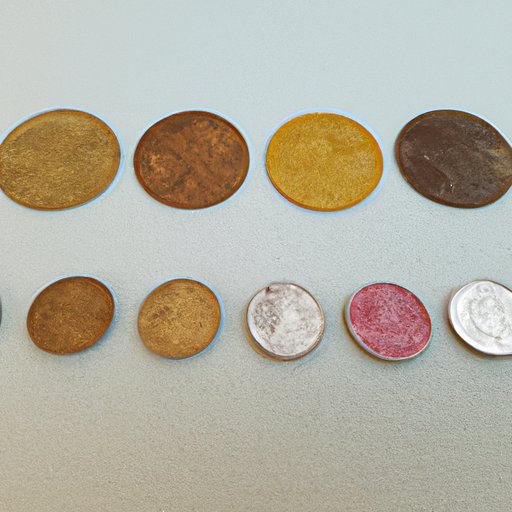
How Coins Have Evolved Over Time
As technology has advanced, so have coins. In the past, coins were made out of precious metals such as gold and silver. Today, most coins are made out of metal alloys such as copper, nickel, and zinc. Coins have also changed in terms of design, with many countries now featuring images of famous people or landmarks on their coins.
A Timeline of Coin Inventions
To better understand the evolution of coins, let’s take a look at a timeline of coin inventions:
Early Coinage
The earliest coins were created in the Kingdom of Lydia around 600 BC. These coins were made out of electrum, a naturally occurring alloy of gold and silver. As coins spread throughout the ancient world, different civilizations began to create their own coins.
Medieval Coinage
During the Middle Ages, coins began to be made out of gold and silver. These coins were widely circulated and used for trading and commerce. As technology advanced, coins became more sophisticated and began to feature images of rulers and other important figures.
Modern Coinage
Modern-day coins are made out of metal alloys such as copper, nickel, and zinc. They are also often decorated with images of famous people or landmarks. In recent years, coins have also begun to feature new technologies such as holograms and RFID chips.
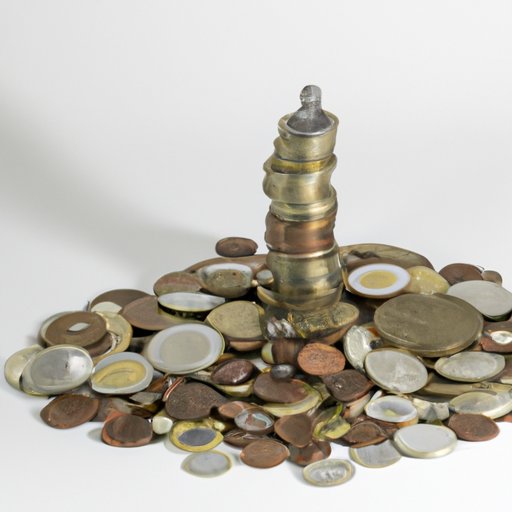
The Impact of Coins on Society
Throughout history, coins have had a major impact on society. Here are some of the ways coins have impacted the world:
Monetary Exchange
Coins have been used as a form of currency for centuries. They have enabled people to buy and sell goods and services, allowing for greater commerce and trade. Without coins, it would be much more difficult to conduct business.
Political Influence
Coins have also had a major influence on politics. Coins have often been used to show off the power and wealth of a ruler or nation. Coins have also been used to communicate messages to the people and to express support for certain causes.
Cultural Significance
Coins have also had a major impact on culture. Coins have often been used to commemorate important events or people and to express national pride. They have also been used to promote tourism and to celebrate special occasions.
Conclusion
This article has explored the history and evolution of coins and the impact they’ve had on the world. We’ve looked at the artistry behind ancient coins, the techniques used to create them, and how coins have evolved over time. We’ve also taken a look at a timeline of coin inventions and the impact coins have had on society. Ultimately, it can be seen that coins have played an integral role in commerce and have had a major influence on politics, culture, and society throughout history.
(Note: Is this article not meeting your expectations? Do you have knowledge or insights to share? Unlock new opportunities and expand your reach by joining our authors team. Click Registration to join us and share your expertise with our readers.)
